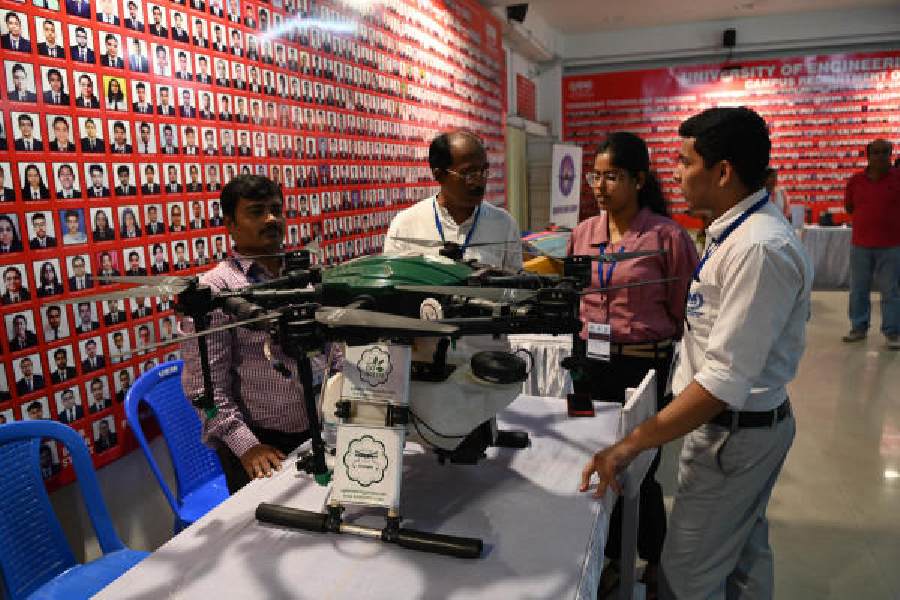Students of University of Engineering and Management showcase drones and UAVs


Students of an engineering college recently showcased drones and UAVs (unmanned aerial vehicles) that they had designed as part of their projects in their coursework.
The displays included drones for local surveillance, agricultural drones for spraying pesticides, human-carrying drones that can be used to carry a heavy load or human beings and underwater drones to find a drowned object.
A national seminar and exhibition on drones and UAVs was jointly organised by the University of Engineering & Management, Kolkata, Aeronautical Society of India, Kolkata, and IIT Kharagpur Alumni Association, Salt Lake chapter, on June 2. It was held at the New Town campus of the University of Engineering & Management.
“The day-long exhibition and seminar provided a platform for students, researchers, industry professionals and end-users to showcase and discuss drones and their problems and tried to find solutions, thereby bridging the gap between academia and industry,” said Rajiv Ganguly, professor and dean, science, University of Engineering & Management.
The exhibition included the work of students across many streams of engineering including electrical, electronics, mechanical and computer science.
“Every branch has its own inputs to be given for the functioning of a drone. We also encourage our students to innovate,” a teacher said.
The seminar was inaugurated by Shekhar Dutt, former defence secretary and former governor of Chhattisgarh. He discussed the evolution of drones from initial defence applications to modern-day usage.
“We have looked into areas of developing drones that would be helpful in the long run. For example, the one for agricultural improvement where fertilisers or pesticides can be sprayed on a large area in a short time. Another one is a drone for a solar panel that will require cleaning or to identify a crack,” said Satyajit Chakrabarti, chancellor, University of Engineering & Management, Kolkata. The programme was attended by drone manufacturers, service providers and drone-flying trainers from across the country.
“Various technological parameters like improving battery life, stability and control, and reducing sound are pertinent issues that need appropriate research to add more value to such applications. Enhanced collaboration between academia and industry is the need of the hour,” said Ganguly.